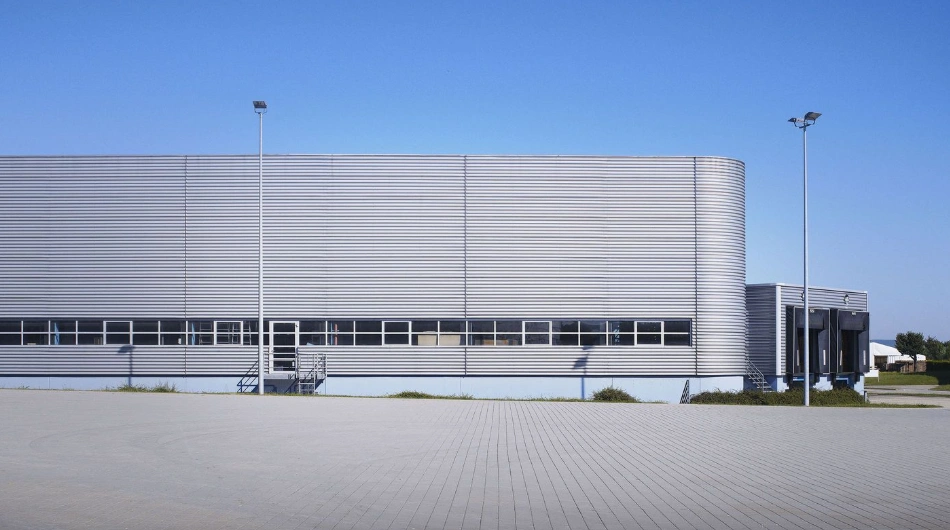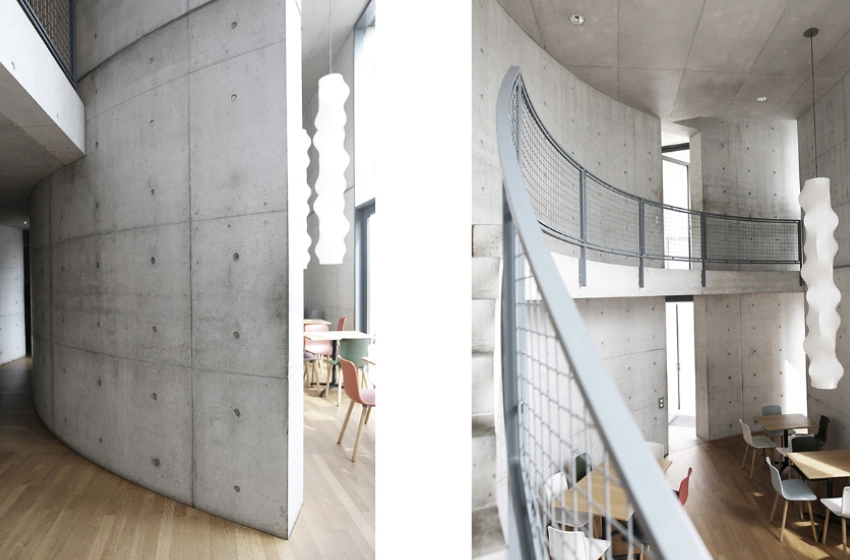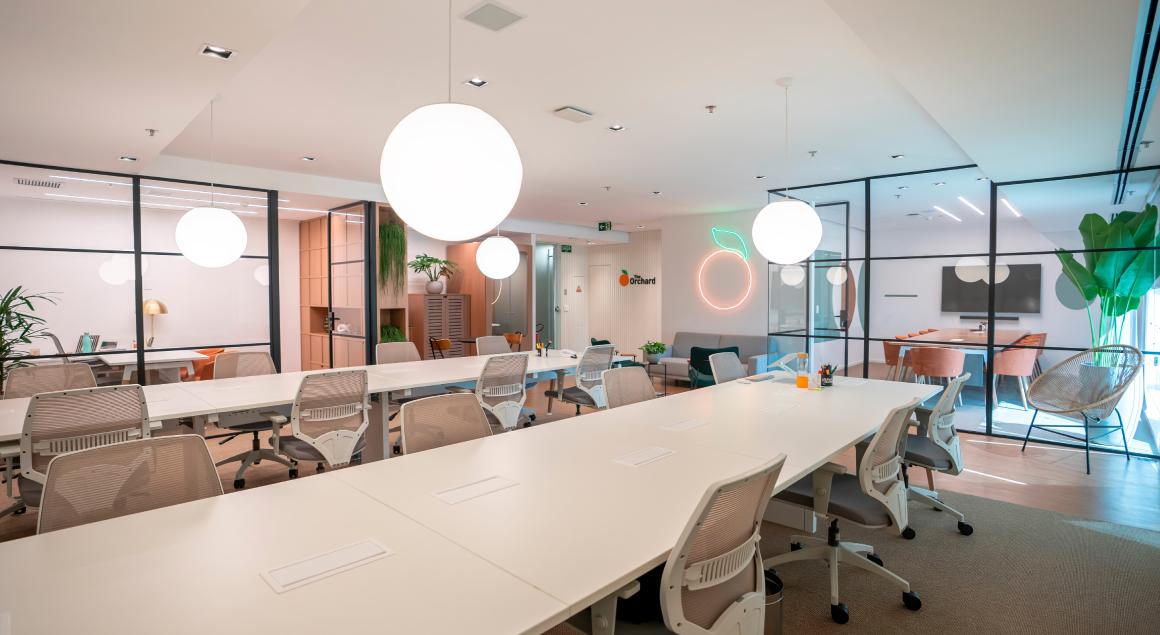
Winston Churchill understood why architecture is our most social art. “We shape our buildings,” he observed, “and then our buildings shape us.”
In the corporate world, the physical space where operations take place is more than just a workplace. It is a tangible extension of the brand’s identity, an architectural translation of its values, mission, and vision. The idea behind branding work in architecture is exactly this: to develop environments whose visual appearance reflects the brand’s identity, transforming them into physical representations of what these brands represent to their customers.
The Role of the Architect as a Visual Translator of the Brand
When applying branding to architecture, the architect’s mission is to act as a visual translator of the brand’s identity. This means that each design element must clearly and effectively communicate the company’s values and essence. Inspiration can come from various aspects of the company’s history, as well as its value proposition. The goal is to create a space that meets the organization’s functional needs and establishes an emotional connection with employees and visitors.
The message conveyed by the environment needs to be clear and consistent to create authentic connections with the audience. This is especially important in high-visibility areas such as reception areas and meeting rooms, where first impressions can significantly influence brand perception.
Stimulating Consciousness and Collaboration
In addition to reflecting a brand’s identity, architectural branding can be a powerful tool for raising awareness among users of a space. This can be achieved by incorporating initiatives that value collaboration and sustainability. For example, collaborative workspaces, breakout areas that promote social interaction, and the use of sustainable materials can all tangibly reinforce a company’s values.
Furniture is a fundamental tool in translating branding into corporate design projects, acting as a tangible element that reflects the brand’s identity and values. Custom furniture, with colors and materials aligned with the company’s palette and concepts, helps to create an environment that visually communicates the brand’s essence.
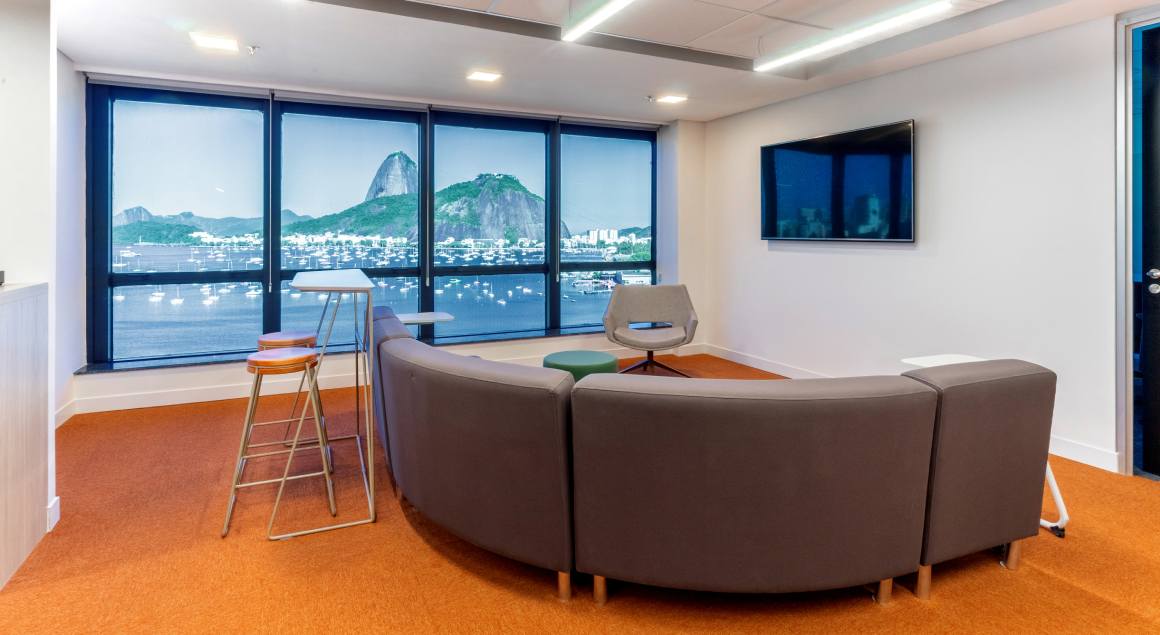
For example, a technology company might opt for furniture with a futuristic design and minimalist lines, using materials such as glass and metal to convey an image of innovation and modernity. On the other hand, a company focused on sustainability might choose furniture made from recycled or renewable materials, with natural finishes, to reinforce its commitment to the environment.
In addition to aesthetics, furniture also plays a crucial functional role that reflects the company’s philosophy on ergonomics and employee well-being. Ergonomic furniture, such as adjustable chairs and height-adjustable desks, demonstrates the company’s concern for the health and comfort of its employees, aligning with values of well-being and productivity.
Differentiated work areas equipped with furniture appropriate for different activities, such as collaborative workstations and comfortable break areas, can promote a flexible and adaptable work environment, reflecting a corporate culture that values adaptability and innovation. In this way, furniture not only contributes to the functionality of the space but also reinforces the brand identity in every detail of the corporate design.
Emotion and Memory in the Workspace
The ultimate goal of architectural branding is to ensure a good brand image, to evoke emotions, and to become memorable to customers and potential customers. A well-designed space can positively influence the purchasing process, creating a unique experience that resonates with the people who interact with the brand.
Applying the Concept to a Project

Highlighting the Brand and Its Colors
One of the most basic principles of branding in architecture is to highlight the brand and its colors, especially in highly visible environments such as the reception area. However, it is crucial to apply these colors wisely to avoid overdoing it. Combining other colors and elements can help to avoid an overly monothematic and visually tiring environment.
In addition to colors, architecture can incorporate inspirational phrases, unique shapes, and different textures that reflect the essence of the brand. The key is to create a harmonious balance that maintains the brand identity without overwhelming the environment.
Integrated Design Elements
Incorporating your brand identity into your space design goes beyond just using colors and logos. You can use custom furniture, strategic lighting, and even artwork that reinforces your brand values. These elements should be carefully chosen to ensure that every aspect of the space contributes to your brand’s narrative.
For example, a financial services company might opt for furniture with sophisticated finishes and materials such as leather and dark wood to convey solidity and trust. A creative media company might choose colorful furniture, bold shapes, and innovative materials to reflect dynamism, creativity, and avant-garde.
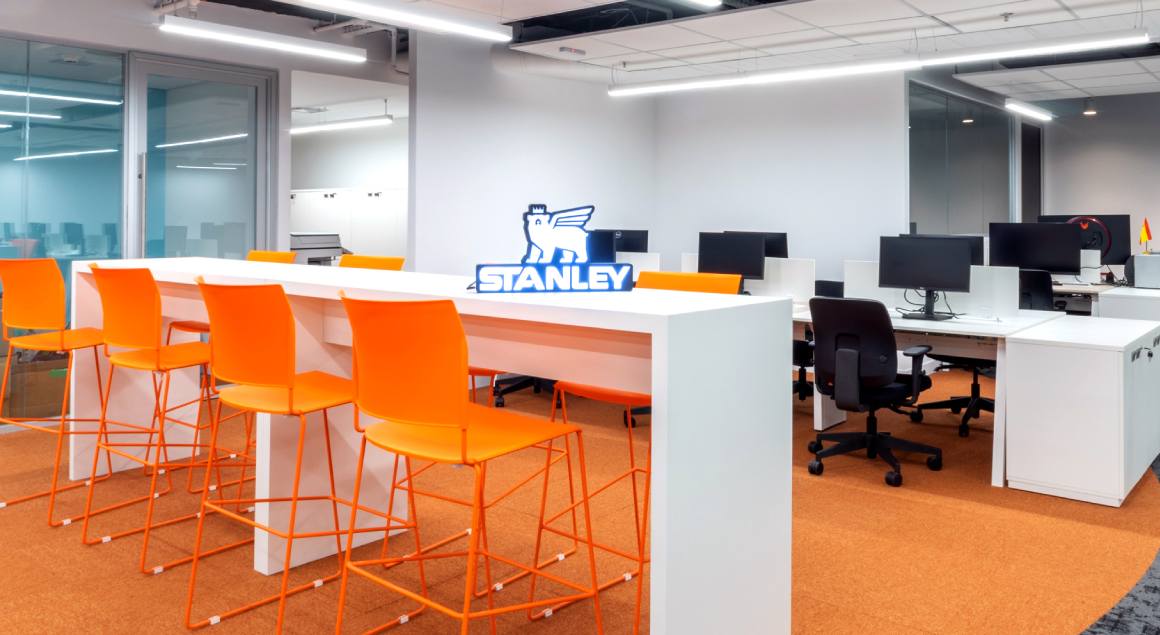
The User Experience
Another important aspect of branding in architecture is the user experience. The design of the space must be intuitive and functional, facilitating the flow of people and the use of different environments. This includes considering the ergonomics of the furniture, the acoustics of the spaces, and the quality of the air and lighting.
A good example of this is the creation of distinct work zones that meet different needs – from quiet concentration areas to open spaces for group collaboration. This diversity of environments not only improves the functionality of the space but also reinforces the image of a company that cares about the well-being and productivity of its employees.
Sustainability and Social Responsibility
Sustainability is a growing value among many brands and can be reflected in a variety of ways in interior design. Using sustainable materials, efficient energy systems, and creating indoor green spaces are just some of the ways to incorporate eco-friendly practices into the corporate environment. These elements not only contribute to a healthier planet but also reinforce the company’s image as responsible and conscientious.
Branding in architecture is a powerful strategy for transforming corporate spaces into physical representations of a brand’s identity. Acting as visual translators, architects and interior designers have the mission of creating environments that not only meet functional needs but also create emotional connections, awaken emotions and positively influence brand perception.
By highlighting your brand and colors, integrating design elements that reflect your company’s values, focusing on the user experience, and incorporating sustainable practices, you can create a workspace that is both functional and inspiring. Good architectural branding goes beyond aesthetics, contributing to a strong and memorable brand image that resonates with everyone who interacts with the space.
Pett Capellato, a specialist in corporate furniture, offers solutions that reflect your brand identity uniquely and functionally. With a diverse portfolio of high-quality furniture, Pett Capellato helps create environments that promote well-being, productivity, and emotional connection with users. Its custom furniture aligns aesthetics and functionality, ensuring that each piece contributes to the brand narrative. Transform your corporate space with Pett Capellato’s expertise and make your company a tangible extension of your values and vision.
Visit Pett Capellato and discover more.

